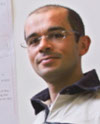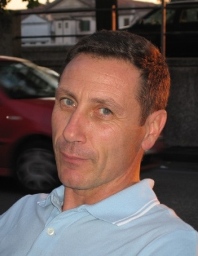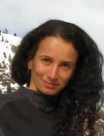Studying at the University of Verona
Here you can find information on the organisational aspects of the Programme, lecture timetables, learning activities and useful contact details for your time at the University, from enrolment to graduation.
Academic calendar
The academic calendar shows the deadlines and scheduled events that are relevant to students, teaching and technical-administrative staff of the University. Public holidays and University closures are also indicated. The academic year normally begins on 1 October each year and ends on 30 September of the following year.
Course calendar
The Academic Calendar sets out the degree programme lecture and exam timetables, as well as the relevant university closure dates..
| Period | From | To |
|---|---|---|
| I semestre | Oct 2, 2017 | Jan 26, 2018 |
| II semestre | Mar 5, 2018 | Jun 1, 2018 |
| Session | From | To |
|---|---|---|
| sessione invernale 2017/2018 - sessione straordinaria 2016/2017 | Jan 29, 2018 | Feb 28, 2018 |
| sessione estiva 2017/2018 | Jun 4, 2018 | Jul 6, 2018 |
| sessione autunnale 2017/2018 | Aug 27, 2018 | Sep 28, 2018 |
| Sessione invernale 2018/2019 - sessione straordinaria 2017/2018 | Jan 28, 2019 | Feb 28, 2019 |
| Session | From | To |
|---|---|---|
| sessione straordinaria 2016/2017 | Mar 19, 2018 | Apr 10, 2018 |
| sessione estiva 2017/2018 | Jul 9, 2018 | Jul 27, 2018 |
| sessione autunnale 2017/2018 | Oct 15, 2018 | Nov 5, 2018 |
| sessione straordinaria 2017/2018 | Mar 18, 2019 | Apr 5, 2019 |
Exam calendar
Exam dates and rounds are managed by the relevant Exercise Science Teaching and Student Services Unit.
To view all the exam sessions available, please use the Exam dashboard on ESSE3.
If you forgot your login details or have problems logging in, please contact the relevant IT HelpDesk, or check the login details recovery web page.
Should you have any doubts or questions, please check the Enrollment FAQs
Academic staff
 paola.cesari@univr.it
paola.cesari@univr.it
 paolo.dellaquila@univr.it
paolo.dellaquila@univr.it
 nicola.rovetti@univr.it
nicola.rovetti@univr.it
 fabio.sartori@univr.it
fabio.sartori@univr.it
Study Plan
The Study Plan includes all modules, teaching and learning activities that each student will need to undertake during their time at the University.
Please select your Study Plan based on your enrollment year.
1° Year
| Modules | Credits | TAF | SSD |
|---|
2° Year activated in the A.Y. 2018/2019
| Modules | Credits | TAF | SSD |
|---|
| Modules | Credits | TAF | SSD |
|---|
| Modules | Credits | TAF | SSD |
|---|
| Modules | Credits | TAF | SSD |
|---|
Legend | Type of training activity (TTA)
TAF (Type of Educational Activity) All courses and activities are classified into different types of educational activities, indicated by a letter.
Biomechanics of human movement (2017/2018)
Teaching code
4S006278
Teacher
Coordinator
Credits
6
Language
English
Scientific Disciplinary Sector (SSD)
M-EDF/01 - PHYSICAL TRAINING SCIENCES AND METHODOLOGY
Period
I semestre dal Oct 2, 2017 al Jan 26, 2018.
Learning outcomes
Biomechanics is concerned with the mechanical / anatomical bases of human movement. An interdisciplinary approach is used in which materials from anatomy, physiology and physics (mechanics) are integrated. Quantitative and qualitative biomechanical analyses of human movement are studied from the perspective of kinematic and kinetic descriptions of multi-segment motion. These external phenomena are used to estimate internal muscle mechanics and joint loading. The purpose of this course is to introduce students to concepts of mechanics as they apply to human movement. The student should gain an understanding of the mechanical and anatomical principles that govern human motion and develop the ability to link the structure of the human body with its function from a mechanical perspective, with particular attention to pathological conditions and changes across one lifespan. At the completion of this course it is desired that each student be able to: 1) describe motion with precise, well-defined mechanical and bio-mechanical terminology; 2) understand and quantify linear and angular characteristics of motion; 3) understand the quantitative relationships between angular and linear motion characteristics of a rotating body; 4) understand and quantify the cause and effect of force, linear and angular kinetic of human movement; 5) interpret and analyze the kinematic, kinetic parameters and muscle activation of normal and pathological gait; 6) evaluate the biomechanical properties of common movement task either in healthy and pathological conditions.
Program
Lectures:
• Short review of math and physics: trigonometric functions, force, vector algebra, moment / torque.
• Anthropometry: density, segment mass, center of mass, moment of inertia, radius of gyration, use of anthropometrics tables.
• Linear and Angular Kinematics: linear velocity & acceleration, differentiation of kinematic data; joint angles, joint angular velocity, joint angular acceleration.
• Linear and angular Kinetics: Newton’s Laws, Link segment model, type of forces, joint force, joint torque.
• Statics/Equilibrium: conditions for equilibrium, levers and pulleys, applications of statics to biomechanics, joint and muscle forces in static condition.
• Posture: biomechanics of standing, joint mechanics during standing, equilibrium conditions during standing; biomechanics of toppling; biomechanics of anticipatory and compensatory postural adjustments, abnormal posture: pathologies and postural deficits.
• Friction: physic of friction, biomechanics of friction in human movement, slipping.
• Inverse Dynamics
• Impulse & Momentum: linear and angular impulse, linear and angular momentum, applications to human movement.
• Work - Energy - Power: definition of work, energy and power, work, energy and power in linear motion, work, energy and power in angular motion.
• Muscle Mechanics: mechanical properties, force-Length relationship, force-Velocity and Torque-Velocity relationships, muscle stiffness.
• Gait: spatial-temporal parameters of gait, kinematic of gait, kinetic of gait, muscles intervention during gait cycle, pathological gait.
• Reaching/Pointing: Biomechanics of reaching and pointing movements, reaching and pointing in pathological conditions.
• Common movement tasks in clinical assessment: gait initiation, stair ascending and descending, landing, seat & stand
Laboratory:
• Descriptive statistics, t-test, linear regression with spreadsheet (e.g. Excel)
• Anthropometry
• Balance Board
• Linear and angular kinematics
• Statics and Equilibrium, forearm and lower limb examples
• Posture, CoP and toppling example
• Lifting, internal torques
• Lifting EMG
• Inverse Dynamic, Ankle joint example
• Ground reaction forces during normal and abnormal gait
• Students’ project
Recommended texts:
• Biomechanics in Clinic and Research. Author: Jim Richards. Churchill Livingstone.
Or
• Biomeccanica: Introduzione alle misure strumentali di postura e movimento. Autore: Filadelfio Puglisi. Marrapese Editore.
• Material provided by the teacher.
• Suggested scientific articles.
Additional texts:
• Biomechanics and motor control of human movement. Author: David A. Winter. Wiley
• Research methods in biomechanics. Authors: Robertson et al. Human Kinetics.
• Biomechanical Analysis of Fundamental Human Movements: Author: Arthur Chapman. Human Kinetics.
• Gait analysis: normal and pathological function. Autore: Perry et al. Thorofare (New Jersey): Slack.
Examination Methods
Gait Inverse Dynamic Project (GP) 20%
Laboratory Project (LP) 30%
Final Exam (FE) 50%
Total 100%
Gait Inverse dynamic Project will be explained and assigned to the students after the lectures about “inverse dynamic”.
Laboratory Project will be assigned at the end of laboratory classes. Students will work on the project as a group (5-6 people) during the 10th to 16th laboratory class. The details of the projects will be given during laboratory classes.
Final exam will consist on a Written Test and an Oral Exam.
Written test:
• The written test will evaluate the capability to apply the logical and mathematical principles of the topics covered at the lectures.
• The written test will contain 30 multiple-choice questions.
• Each question will have a score from 1 to 3 for a total of 45 points. Incorrect and missing answers will have a score of 0.
• The written test grade will be obtained by dividing the test score by 1.5 (45/30)
Oral Exam:
• The admission to the Oral Exam requires ≥18/30 at the Written Test.
• The only admission to the Oral Exam does not guarantee to pass the Final Exam.
• It will consist in an oral discussion aimed to evaluate:
- Insightful understanding of course theoretical concepts;
- Use of proper terminology;
- Competency to translate the theoretical concepts to practical settings;
• The student is free to taking the Oral Exam either in Italian or English.
• Taking the Oral Exam in English will assign a Bonus of 1.5 points.
Final grade will be assigned as follows:
(GPx20 + LPx30 + FEx50)/(20+30+50)+English Bonus
N.B. Minimal requirement to pass the entire course: 18/30 in each part (i.e. GP,LP,FE)
Teaching materials e documents
-
 Biomechanics of Human Movement Programma
(pdf, it, 82 KB, 08/10/17)
Biomechanics of Human Movement Programma
(pdf, it, 82 KB, 08/10/17)
-
 Biomechanics of Human Movement Syllabus
(pdf, en, 83 KB, 08/10/17)
Biomechanics of Human Movement Syllabus
(pdf, en, 83 KB, 08/10/17)
-
 Dropbox Link Lectures and Labs
(pdf, en, 6 KB, 12/10/17)
Dropbox Link Lectures and Labs
(pdf, en, 6 KB, 12/10/17)
-
 Lab_1
(octet-stream, it, 76 KB, 11/10/17)
Lab_1
(octet-stream, it, 76 KB, 11/10/17)
Type D and Type F activities
| years | Modules | TAF | Teacher | |
|---|---|---|---|---|
| 1° | Anthropometry | D |
Carlo Zancanaro
(Coordinator)
|
|
| 1° | Biochemistry for sport | D |
Marta Palmieri
(Coordinator)
|
|
| 1° | Methodology of sport activities measures | D |
Luca Paolo Ardigo'
(Coordinator)
|
|
| 2° | Adapted motor learning | D |
Mirta Fiorio
(Coordinator)
|
|
| 2° | Physiology of sport nutrition | D |
Silvia Pogliaghi
(Coordinator)
|
|
| years | Modules | TAF | Teacher | |
|---|---|---|---|---|
| 1° | Sports and drugs | D |
Roberto Leone
(Coordinator)
|
|
| 1° | Forensic medicine and social security | D |
Aldo Eliano Polettini
(Coordinator)
|
|
| 1° | Research methodology applied to sport | D |
Laurent Damien George Mourot
(Coordinator)
|
|
| 1° | Statistics applied to movement sciences | D |
Maria Elisabetta Zanolin
(Coordinator)
|
|
| 2° | Advanced nutrition for sports | D |
Silvia Pogliaghi
(Coordinator)
|
|
| 2° | Neuromotor rehabilitation | D |
Nicola Smania
(Coordinator)
|
|
| 2° | Theory and pedagogy of nordic walking | D |
Barbara Pellegrini
(Coordinator)
|
|
Career prospects
Module/Programme news
News for students
There you will find information, resources and services useful during your time at the University (Student’s exam record, your study plan on ESSE3, Distance Learning courses, university email account, office forms, administrative procedures, etc.). You can log into MyUnivr with your GIA login details: only in this way will you be able to receive notification of all the notices from your teachers and your secretariat via email and soon also via the Univr app.
Graduation
List of theses and work experience proposals
Student mentoring
Gestione carriere
Orario lezioni
L’orario delle lezioni comprende
Lezioni Frontali in aula
Esercitazioni e laboratori
Questi ultimi sono organizzati per gruppi dai singoli docenti responsabili dei corsi.
L'orario è pubblicato nel portale studenti
Modalità di frequenza
Vige l'obbligo di frequenza al 70% come specificato nel Regolamento di ogni singolo corso di laurea e laurea magistrale:
Ulteriori informazioni:
L'accesso alle pagine Moodle dei singoli insegnamenti è vincolato alla compilazione del piano di studi.
App Univr Lezioni, FAQ e guida all'utilizzo sono disponibili al seguente link: orario-lezioni-e-modalita-di-frequenza
Comunicati: Avvisi per studenti
Internships
Internships are aimed at enabling students to gain direct knowledge of the world of work and to acquire specific professional skills.
Internships are carried out under the responsibility of an individual lecturer, and can be carried out in professional firms, public administration bodies and companies recognised by the University of Verona.
Any CFU credits gained by doing internships will be recognised and recorded by the University in accordance with the relevant University regulations in force (Regolamento d’Ateneo per il riconoscimento dei crediti maturati negli stage universitari).
For further information on internships, please go to: https://www.univr.it/it/i-nostri-servizi/stage-e-tirocini.
Linguistic training CLA
Certificazione medica di idoneità
Riferimenti normativi principali: DM 24 aprile 2013 art. 3, GU 169 del 20-07-2013; Decreto del Ministro della Salute dell’8 agosto 2014 e s.m.i.
Per frequentare le attività dei corsi di Laurea e Laurea magistrale di Scienze motorie è obbligatorio presentare la certificazione medica di idoneità fisica per attività sportiva non agonistica. La certificazione è necessaria per accedere alle attività pratiche-esercitative e al tirocinio.
à COME OTTENERE LA CERTIFICAZIONE
La certificazione - riportante l’indicazione che è stato eseguito l’ECG a riposo - può essere rilasciata da:
- centri o servizi di medicina dello sport delle ASL (ora ATS) e delle aziende ospedaliere
- istituti della Federazione Medico Sportiva Italiana
- centri pubblici o privati autorizzati:
- dai medici di medicina generale di libera scelta, relativamente ai propri assistiti;
- dal medico specialista in medicina dello sport.
L’ECG a riposo deve essere ripetuto annualmente.
E’ ammesso anche il certificato medico di idoneità alla pratica sportiva agonistica, per chi ne fosse già in possesso.
à SCADENZA PER LA PRESENTAZIONE
La certificazione medica deve essere prodotta al momento dell'immatricolazione e, comunque, entro l’inizio delle lezioni alla Segreteria Corsi di Studio Scienze motorie. Spetta agli studenti rinnovarla annualmente alla scadenza - per ogni anno di iscrizione in corso o fuori corso. La Segreteria effettuerà periodicamente dei controlli sulla consegna dei certificati.
NOTA: Studenti immatricolati a seguito di SUBENTRO/RIPESCAGGIO/TRASFERIMENTO IN INGRESSO: se non è possibile rispettare la scadenza di presentazione del certificato sopra indicata, avvisare la Segreteria Corsi di Studio Scienze, scrivendo all’indirizzo certmed.scienzemotorie@ateneo.univr.it
à MODALITA’ DI CONSEGNA
La certificazione va inviata alla Segreteria Corsi di Studio Scienze motorie dalla propria e-mail istituzionale nome.cognome@studenti.univr.it all’indirizzo certmed.scienzemotorie@ateneo.univr.it.
Student login and resources
Competenze linguistiche
DOPO LA LAUREA TRIENNALE
Per proseguire gli studi in uno dei corsi di Laurea Magistrale dell'ambito delle Scienze motorie è necessario possedere competenze linguistiche almeno di livello B1 informatizzato (o superiore) specificamente di lingua inglese, poichè i corsi di studio di livello superiore prevedono nel proprio piano didattico la presenza di insegnamenti o di moduli impartiti dai docenti direttamente in inglese.
Inoltre, tali competenze costituiscono requisito di accesso indispensabile per poter partecipare alla prova di ìngresso oppure per iscriversi ad una laurea magistrale.
La conoscenza di altre lingue diverse dall'Inglese NON può venire riconosciuta come "requisito" utile per l'accesso ai corsi di laurea magistrale. Tuttavia, la certificazione posseduta potrà essere valutata da un'apposita Commissione di docenti ed eventualmente riconosciuta in termini di crediti (CFU) a scelta dello studente, presentando domanda al momento dell'immatricolazione.
Si invita a leggere con attenzione i bandi di concorso annuali per l'ammissione ai corsi di laurea magistrali per maggiori informazioni - consultare nel sito del corso di studio anche la sezione "Iscriversi".

 +39 045 842 5117
+39 045 842 5117






















